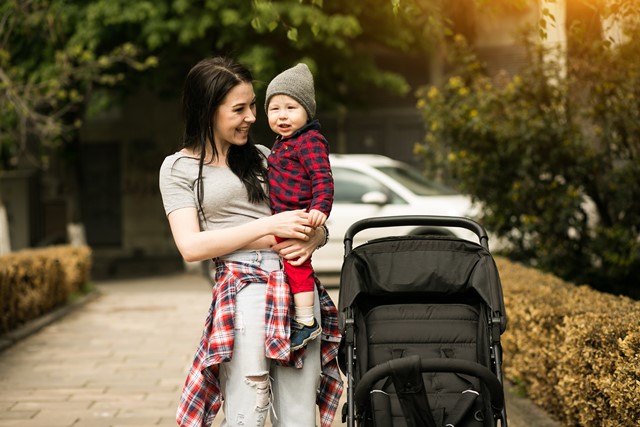
Image Source: FreePik
Have you ever heard of the metaphor, “baby steps”? It means the initial step or slow progress towards a long process. The same definition is also applicable to your baby’s first steps. Losing patience and rushing your little one to be independent is never a good thing. If you put yourself in his/her shoes, wouldn’t it be daunting to explore the world when you can barely stand up straight?
To help your baby begin this significant milestone, you can put him/her in a walker. No, not the one that Rick Grimes fought against. Walkers can date back to as early as the 15th century, and it has two types. The traditional one is the sit-to-stand, and the modern version is the seated walker.
Both of these types have their own advantages and disadvantages. According to CuteLittleDarling.com, modern walkers are the better choice for babies who are more likely to sit randomly. It also has more safety features like brake pads and locking wheels.
However, even if walkers continuously prove themselves to be safe, a lot of parents are still hesitant. Is this equipment really necessary? If you think about it, a walker does offer advantages. These include added stability, fun yet educational toys, they can inspire children to walk, and some even double as a highchair.
But the lingering question is, do walkers really help children to walk? Or are they just something we use to substitute for us temporarily?
The Negatives in Walkers
Babies who use walkers may take a longer time to walk or crawl
There is a study by Siegel and Burton that concludes using a walker can delay a baby’s motor development. According to this study, the plastic trays that manufacturers have added for safety can cause detrimental effects in the baby’s motor development. The reason is that it prevents the child from seeing his/her moving legs. As suggested by other developmental studies, the visual feedback on body and limb movements is essential for motor skills.
Another reason that children who use walkers may take a longer time to walk or crawl is that they are assisted upon movement. The process of walking or crawling is not challenging enough for them. It is important that babies have to attempt moving themselves around and that they should not use walkers for a long period. This way, they’d be naturally stimulated to start walking by themselves.
However, as suggested by the studies from Shahid Beheshti University of Medical Sciences and Bahidian and colleagues, further research is necessary to put all the accountability in walker usage. When it comes to delayed motor (and mental) developments, there are different factors that can play a role throughout a child’s developmental years.
Using a walker can interfere with learning how to balance naturally
Besides walking, another milestone that walkers can interfere with is the concept of balance. Because walkers bypass the complete steps from rolling over, crawling, and standing before walking, babies might not learn how to balance themselves naturally.
As we have mentioned earlier, walker usage shouldn’t take too long. When babies do not get a chance to experience obstacles and work themselves against gravity, they might need to start all over again once they stopped using their walkers.
The thing is, as scary it might be for you, all those clumsy mistakes are essential for your child’s motor, mental, and muscular development. Of course, this doesn’t remove the fact that you always have to remain vigilant, but overprotectiveness also limits your child’s ability to be independent. Experience is the best teacher anyway, right?
Objects that are normally out of reach may become accessible with walkers
A baby walker is not a substitute for a human caretaker. Because walkers allow your child to be mobile, things that are typically out of arm’s length will be easier to reach. You should keep dangerous items away from the area where you let your child explore.
Children are naturally curious, so they will always be tempted to reach or taste everything. Some examples of what you should hide are flammables, electric sockets, sharp objects, toxic substances that look enticing, or anything that is heavy and breaks easily.
Wheeled walkers shorten your time to react if something happens.
The American Academy of Pediatrics calls for a ban in baby walkers because of the injuries related to their use. One of the common sources of injuries is from stairs. Because walkers have wheels, this speed up a child’s movement, therefore, what seems like a long travel distance can actually get shorter. This is potentially dangerous because your time reaction is also shortened.
Besides items, it is also important that you baby proof all hazardous areas from stairs to pools. Although some models have non-slip pads that prevent the walker from moving forward on uneven surfaces, it is still something that is not worth risking.
Yes, it is natural to have moments where we need to leave our child for a minute or two, but it is also our duty to be always one step ahead; literally and figuratively.
Conclusion
Because of the following reasons, a lot of families are choosing to skip using walkers. But at the end of the day, your decision still depends on how you weigh the advantages and disadvantages of this equipment.
Having said that, walkers can be useful with proper supervision and usage duration. First, they can act as support for babies who are trying to walk. There are also models with an activity center to keep your little one engaged with toys and learning materials. And let’s face it, every now and then, you’ll need a spot to keep your baby safe when you’re unable to focus for a moment.
However, it will always be safer to have someone keep an eye on your child if you are going to be occupied for a long time. Remember that some potential hazards and risks of walkers are due to negligence and for that reason, you can easily avoid them just by being vigilant.
About The Author:
Annette Barnes is a founder and editor of CuteLittleDarling.com, blogger, writer, social media enthusiast. She loves helping people and she does so by writing any knowledge that can be useful.




